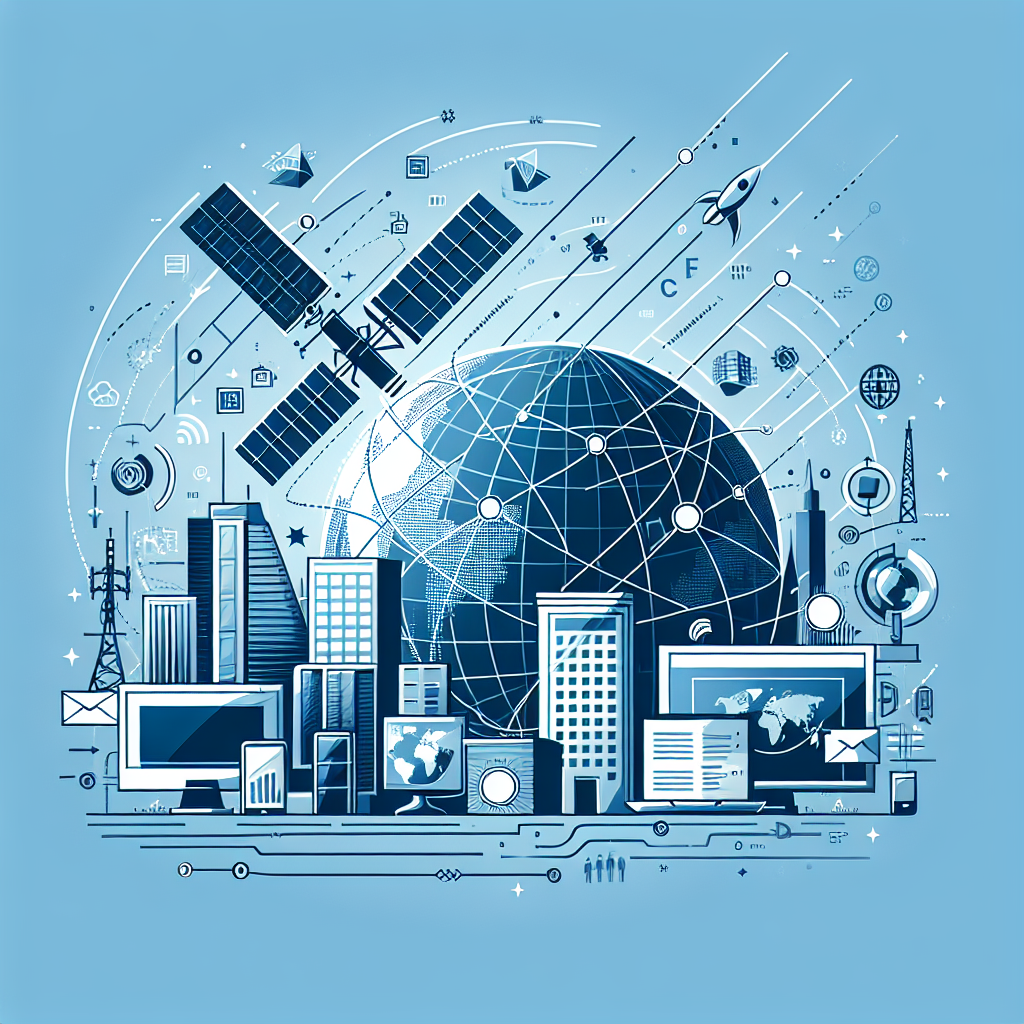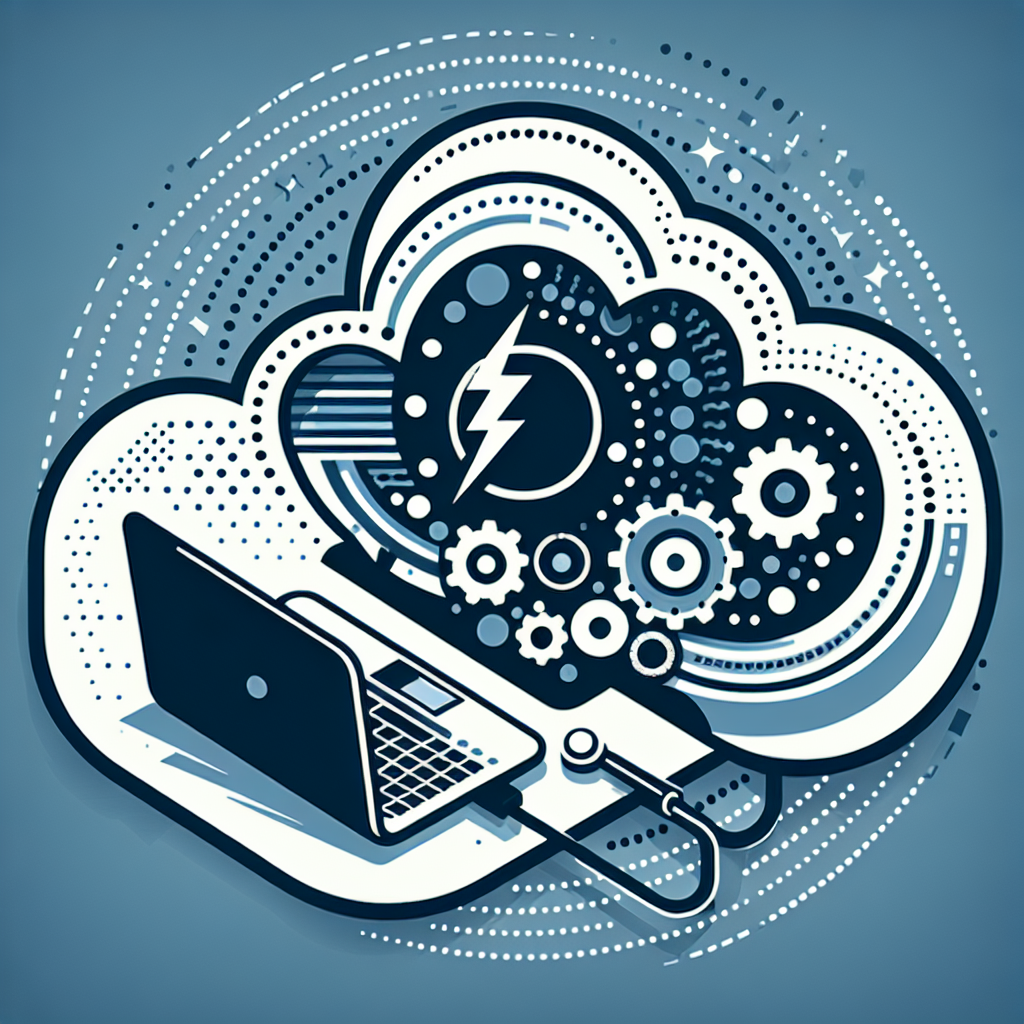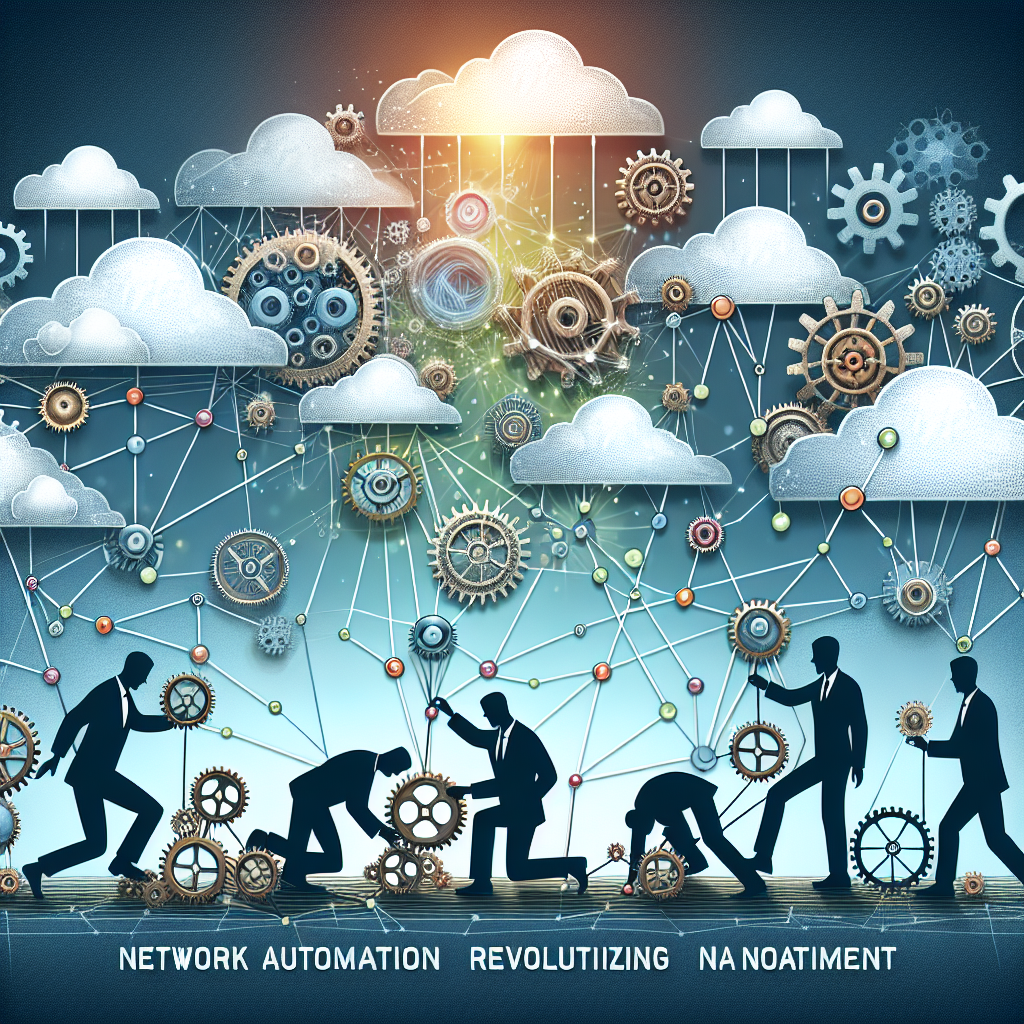Your cart is currently empty!
Tag: Revolutionizing

How Remote Monitoring Technology is Revolutionizing the Way Businesses Operate
Remote monitoring technology has become a game-changer for businesses of all sizes, allowing them to streamline operations, improve efficiency, and save costs. This innovative technology enables businesses to monitor and manage their assets, equipment, and processes from anywhere in the world, providing real-time insights and analytics that can drive better decision-making.One of the key benefits of remote monitoring technology is its ability to provide businesses with a comprehensive view of their operations. By collecting data from various sensors and devices, businesses can gain a better understanding of how their assets are performing, identify potential issues before they become major problems, and make informed decisions to optimize performance.
For example, in the manufacturing industry, remote monitoring technology can help businesses track the performance of their machines, monitor energy consumption, and identify inefficiencies in the production process. By having real-time data at their fingertips, manufacturers can make adjustments to improve productivity, reduce downtime, and ultimately increase profitability.
Remote monitoring technology is also revolutionizing the way businesses manage their facilities and infrastructure. For companies with multiple locations, remote monitoring technology allows them to monitor energy usage, HVAC systems, security cameras, and other critical infrastructure from a centralized dashboard. This not only improves operational efficiency but also enhances security and safety measures.
In the healthcare industry, remote monitoring technology is helping healthcare providers deliver better care to patients. By remotely monitoring patients’ vital signs, medication adherence, and overall health status, healthcare providers can intervene proactively to prevent complications and improve patient outcomes. This technology is especially valuable for patients with chronic conditions who require continuous monitoring and management.
Overall, remote monitoring technology is transforming the way businesses operate by providing them with real-time insights, improved efficiency, and cost savings. By leveraging this technology, businesses can stay ahead of the competition, drive innovation, and deliver better products and services to their customers. As the technology continues to evolve, we can expect even more advancements that will further revolutionize the way businesses operate in the future.

How Managed Service Providers Are Revolutionizing Business Technology
In today’s fast-paced business world, staying ahead of the curve when it comes to technology is essential for success. However, many companies struggle to keep up with the rapidly evolving landscape of IT solutions. This is where managed service providers (MSPs) come in. These innovative companies are revolutionizing the way businesses approach their technology needs, making it easier and more cost-effective than ever to stay competitive.Managed service providers offer a wide range of services to help businesses streamline their IT operations. From network monitoring and security to data backup and disaster recovery, MSPs provide comprehensive solutions that can be customized to meet the unique needs of each client. By outsourcing their IT needs to an MSP, businesses can free up valuable time and resources that can be better spent on core business activities.
One of the key benefits of working with an MSP is the ability to access cutting-edge technology without the high upfront costs associated with purchasing and maintaining hardware and software. MSPs have the expertise and resources to implement the latest technology solutions, ensuring that their clients stay ahead of the competition. This can be particularly beneficial for small and medium-sized businesses that may not have the budget or expertise to invest in their own IT infrastructure.
Another advantage of working with an MSP is the peace of mind that comes with knowing that your technology needs are being handled by experts. MSPs employ highly skilled professionals who are well-versed in the latest industry trends and best practices. This means that businesses can rest easy knowing that their IT systems are in good hands, allowing them to focus on what they do best – running their business.
In addition to providing proactive IT support, managed service providers also offer valuable insights and advice on how businesses can optimize their technology investments. By analyzing data and monitoring performance metrics, MSPs can help their clients identify areas for improvement and implement strategies to maximize efficiency and productivity. This can result in significant cost savings and improved overall business performance.
Overall, managed service providers are revolutionizing the way businesses approach their technology needs. By outsourcing IT operations to an MSP, companies can access cutting-edge technology, reduce costs, and improve efficiency, all while freeing up valuable time and resources. With the rapid pace of technological change, working with an MSP is no longer just an option – it’s a necessity for businesses looking to stay competitive in today’s digital age.

The Role of AI in Revolutionizing Technical Support Services
In today’s fast-paced world, businesses are constantly looking for ways to improve their customer service offerings. One area that has seen significant advancements in recent years is technical support services, with the integration of artificial intelligence (AI) playing a key role in revolutionizing the way organizations provide assistance to their customers.AI technology has the ability to automate various tasks and processes, making it a valuable tool for enhancing technical support services. By leveraging AI-powered solutions, businesses can streamline their support operations, reduce response times, and increase customer satisfaction.
One of the key ways AI is revolutionizing technical support services is through the use of chatbots. These AI-powered virtual assistants can interact with customers in real-time, providing instant answers to their queries and guiding them through troubleshooting steps. Chatbots are available 24/7, which means customers can get assistance whenever they need it, without having to wait for a human agent to be available.
AI-powered chatbots can also learn from each interaction, becoming more intelligent and better able to assist customers over time. This not only improves the overall customer experience but also frees up human agents to focus on more complex issues that require human intervention.
Another way AI is transforming technical support services is through predictive analytics. By analyzing data from customer interactions, AI algorithms can identify trends and patterns that can help predict potential issues before they occur. This proactive approach allows businesses to address issues before they escalate, reducing downtime and improving customer satisfaction.
In addition, AI can also be used to automate routine tasks, such as ticket routing and prioritization. By leveraging AI-powered tools, businesses can ensure that customer inquiries are directed to the right department or agent, leading to quicker resolution times and improved customer satisfaction.
Overall, the role of AI in revolutionizing technical support services cannot be understated. By leveraging AI technology, businesses can improve the efficiency and effectiveness of their support operations, leading to happier customers and a competitive edge in the market. As AI continues to evolve and improve, we can expect to see even more innovations in technical support services in the years to come.

How Cloud Computing is Revolutionizing Modern Technology
Cloud computing has completely revolutionized modern technology, changing the way businesses and individuals store, access, and manage data. This innovative technology has transformed the way we work, collaborate, and communicate, offering numerous benefits that have made it an essential component of today’s digital world.One of the key advantages of cloud computing is its scalability and flexibility. With traditional on-premises infrastructure, businesses had to invest in expensive hardware and software that quickly became outdated. Cloud computing eliminates the need for physical servers and allows businesses to scale up or down based on their needs, making it a cost-effective solution for companies of all sizes.
Cloud computing also offers enhanced security features, ensuring that data is protected from cyber threats and disasters. Cloud service providers invest heavily in security measures, such as encryption, firewalls, and regular security audits, to safeguard sensitive information and prevent unauthorized access. This level of security is often beyond what many businesses can achieve on their own, making cloud computing a secure option for storing and managing data.
Another benefit of cloud computing is its accessibility. With cloud-based applications and storage, users can access their data from any device, anywhere in the world, as long as they have an internet connection. This flexibility has enabled remote work to become more prevalent, allowing employees to collaborate and communicate effectively regardless of their location.
Additionally, cloud computing has revolutionized the way software is delivered and updated. Instead of purchasing and installing software on individual devices, users can now access applications through the cloud on a subscription basis. This means that software updates are automatically pushed out to users, ensuring that they always have the latest features and security patches without the need for manual updates.
Overall, cloud computing has become an indispensable tool for businesses and individuals looking to streamline their operations, improve efficiency, and reduce costs. Its scalability, security, accessibility, and ease of use have made it a game-changer in the tech industry, paving the way for a more connected and efficient digital future. As technology continues to evolve, cloud computing will undoubtedly play a crucial role in shaping the way we work, communicate, and innovate.

How Network Automation is Revolutionizing Network Management
Network automation is quickly becoming a game-changer in the world of network management. With the increasing complexity of modern networks and the growing demand for greater efficiency and agility, traditional manual network management methods are no longer sufficient. Network automation is revolutionizing the way networks are managed by enabling organizations to automate repetitive tasks, streamline operations, and improve overall network performance.One of the primary benefits of network automation is the ability to reduce human error. Manual network management processes are prone to mistakes, which can lead to network downtime, security breaches, and other costly issues. By automating routine tasks such as device provisioning, configuration management, and troubleshooting, organizations can minimize the risk of errors and ensure consistent network performance.
Another key advantage of network automation is increased efficiency. Automation allows IT teams to complete tasks in a fraction of the time it would take to do them manually, freeing up valuable resources to focus on more strategic initiatives. This increased efficiency also enables organizations to respond more quickly to network issues and changes, minimizing downtime and improving overall network reliability.
Network automation also offers improved scalability and agility. As networks continue to grow in size and complexity, manual management becomes increasingly difficult to scale. Automation allows organizations to easily scale their networks and adapt to changing business requirements without the need for additional resources or significant downtime. This agility is essential in today’s fast-paced business environment, where organizations must be able to quickly respond to new opportunities and challenges.
Additionally, network automation provides greater visibility and control over network infrastructure. By automating tasks such as network monitoring and reporting, organizations can gain real-time insights into network performance and identify potential issues before they impact users. This proactive approach to network management helps organizations improve network security, optimize performance, and ensure compliance with industry regulations.
Overall, network automation is revolutionizing network management by enabling organizations to streamline operations, reduce errors, improve efficiency, and enhance scalability and agility. As networks continue to grow in complexity, automation will become increasingly essential for organizations looking to stay competitive and meet the demands of the modern business landscape. By embracing network automation, organizations can unlock the full potential of their networks and drive innovation and growth in the digital age.

How Remote Monitoring is Revolutionizing the Energy Industry
The energy industry is constantly evolving, with new technologies and innovations being introduced to help improve efficiency and sustainability. One of the most recent advancements in the industry is remote monitoring, which is revolutionizing the way energy companies operate and manage their assets.Remote monitoring involves the use of sensors, communication devices, and data analytics to monitor and control energy assets from a remote location. This allows companies to track their energy usage, equipment performance, and environmental impact in real-time, providing them with valuable insights that can help improve operational efficiency and reduce costs.
One of the key benefits of remote monitoring in the energy industry is the ability to identify and address issues before they become major problems. By continuously monitoring equipment performance and energy usage, companies can detect issues such as equipment malfunctions, energy leaks, and inefficiencies early on, allowing them to take proactive measures to resolve them before they escalate. This can help prevent costly downtime and equipment failures, leading to significant savings for energy companies.
Remote monitoring also allows companies to optimize their energy usage and reduce their environmental impact. By analyzing data collected from sensors and monitoring devices, companies can identify opportunities to improve energy efficiency, reduce waste, and lower their carbon footprint. This not only helps companies save money on energy costs but also contributes to a more sustainable and environmentally friendly operation.
Furthermore, remote monitoring enables energy companies to make data-driven decisions and improve their overall business performance. By having access to real-time data and analytics, companies can better understand their energy consumption patterns, identify trends, and optimize their operations to maximize efficiency and profitability. This can help companies stay competitive in a rapidly changing market and adapt to new regulations and industry standards.
Overall, remote monitoring is revolutionizing the energy industry by providing companies with the tools and insights they need to operate more efficiently, reduce costs, and minimize their environmental impact. As technology continues to advance, we can expect to see even more innovations in remote monitoring that will further transform the way energy companies manage their assets and resources.

How IT Solutions Are Revolutionizing the Healthcare Industry
In recent years, the healthcare industry has seen a significant shift towards the implementation of IT solutions to streamline processes, improve patient care, and reduce costs. From electronic health records to telemedicine, technology has revolutionized the way healthcare is delivered and managed.One of the key ways in which IT solutions are revolutionizing the healthcare industry is through the implementation of electronic health records (EHRs). EHRs allow healthcare providers to access patient information quickly and easily, leading to more coordinated and efficient care. With EHRs, patient records are no longer stored in paper files that can easily be lost or misplaced. Instead, all patient information is stored digitally, making it easily accessible to all healthcare providers involved in a patient’s care.
Another way in which IT solutions are transforming the healthcare industry is through telemedicine. Telemedicine allows patients to receive medical care remotely, through video conferencing and other digital communication tools. This has been especially beneficial during the COVID-19 pandemic, when in-person visits to healthcare facilities were limited. Telemedicine has made it possible for patients to receive care from the comfort of their own homes, reducing the risk of exposure to the virus and improving access to care for those in rural or underserved areas.
IT solutions are also being used to improve patient outcomes through data analytics. By analyzing large amounts of data, healthcare providers can identify trends and patterns that can help them make more informed decisions about patient care. For example, data analytics can be used to predict which patients are at risk for certain conditions, allowing healthcare providers to intervene early and prevent complications.
Additionally, IT solutions are helping to improve the efficiency of healthcare operations. For example, automated appointment scheduling systems can help reduce wait times for patients and improve the overall patient experience. Similarly, inventory management systems can help healthcare facilities track and manage their supplies more effectively, reducing waste and saving money.
Overall, IT solutions are revolutionizing the healthcare industry by improving patient care, increasing efficiency, and reducing costs. As technology continues to advance, we can expect to see even more innovations that will further transform the way healthcare is delivered and managed. It is clear that IT solutions are here to stay in the healthcare industry, and their impact will only continue to grow in the years to come.

Remote Monitoring: Revolutionizing Maintenance and Asset Management
Remote monitoring technology is revolutionizing maintenance and asset management across industries, providing unprecedented visibility and control over critical assets and equipment. With the ability to monitor equipment in real-time from anywhere in the world, organizations can proactively identify issues, prevent downtime, and optimize performance.One of the key advantages of remote monitoring is its ability to provide continuous insights into the health and performance of assets. By collecting data on key parameters such as temperature, pressure, vibration, and energy consumption, organizations can gain a deeper understanding of how their assets are operating and identify potential issues before they escalate into costly failures.
In addition to proactive maintenance, remote monitoring also enables predictive maintenance strategies. By analyzing historical data and trends, organizations can predict when equipment is likely to fail and schedule maintenance activities accordingly. This not only reduces the risk of unplanned downtime but also extends the lifespan of assets and reduces maintenance costs.
Furthermore, remote monitoring can improve asset management by providing visibility into asset utilization and performance. By tracking key metrics such as asset availability, uptime, and efficiency, organizations can optimize asset usage, identify underperforming assets, and make informed decisions about maintenance and replacement strategies.
Remote monitoring technology is particularly valuable for organizations with dispersed assets or remote operations. With the ability to monitor assets from a centralized location, organizations can reduce the need for on-site inspections and maintenance visits, saving time and resources. Additionally, remote monitoring can improve safety by reducing the need for personnel to access potentially hazardous or hard-to-reach locations.
Overall, remote monitoring technology is transforming maintenance and asset management by providing real-time insights, enabling proactive and predictive maintenance strategies, and optimizing asset performance. Organizations that embrace remote monitoring stand to benefit from increased operational efficiency, reduced downtime, and improved asset reliability. As technology continues to evolve, remote monitoring will play an increasingly vital role in helping organizations manage their assets effectively and efficiently.

How Cloud Computing is Revolutionizing the Healthcare Industry
Cloud computing has been a game changer for industries across the board, but perhaps none more so than the healthcare industry. With the ability to store and access large amounts of data remotely, securely, and in real-time, cloud computing has revolutionized the way healthcare providers deliver care and manage patient information.One of the key benefits of cloud computing in healthcare is its ability to streamline and centralize data storage. Traditionally, healthcare providers had to rely on physical servers and on-site storage solutions to store patient records and other important data. This not only required a significant investment in hardware and IT infrastructure, but also made it difficult to access and share information across different departments and locations.
With cloud computing, healthcare providers can store all of their data in a secure, centralized location that can be accessed from anywhere with an internet connection. This not only makes it easier for healthcare providers to access patient records and other important information, but also allows for real-time collaboration and communication between different healthcare professionals.
Another key benefit of cloud computing in healthcare is its ability to improve data security and compliance. Cloud computing providers invest heavily in state-of-the-art security measures to protect sensitive patient information from cyber threats and data breaches. This means that healthcare providers can rest assured that their data is safe and secure, and that they are in compliance with regulations such as HIPAA.
In addition to streamlining data storage and improving security, cloud computing in healthcare also has the potential to improve patient outcomes. By leveraging cloud-based analytics and machine learning algorithms, healthcare providers can analyze large amounts of data to identify trends and patterns that can help them make more informed decisions about patient care.
For example, healthcare providers can use cloud-based analytics to predict which patients are at risk for certain diseases or conditions, and intervene early to prevent or mitigate these risks. They can also use cloud-based telemedicine solutions to provide remote consultations and monitoring for patients who may not be able to visit a healthcare facility in person.
Overall, cloud computing is revolutionizing the healthcare industry by enabling healthcare providers to store, access, and analyze large amounts of data in real-time, securely, and cost-effectively. By leveraging cloud-based solutions, healthcare providers can improve patient outcomes, streamline operations, and stay ahead of the curve in an increasingly digital and data-driven world.

How Cloud Computing is Revolutionizing the Way We Work
Cloud computing has completely revolutionized the way we work, providing businesses and individuals with the flexibility, scalability, and efficiency they need to thrive in today’s fast-paced digital world. Gone are the days of relying on physical servers and storage devices to store and access data – now, everything can be done in the cloud.One of the key benefits of cloud computing is its flexibility. With cloud-based services, employees can access their work from anywhere, at any time, using any device with an internet connection. This means that remote work has become more accessible than ever, allowing employees to work from home, on the go, or from a different country altogether. This flexibility not only increases productivity but also improves work-life balance for employees.
Scalability is another major advantage of cloud computing. Businesses no longer need to invest in expensive hardware and software upgrades to accommodate growth – instead, they can simply adjust their cloud storage and computing resources to meet their changing needs. This means that businesses can scale up or down as needed, without incurring hefty costs or downtime.
Furthermore, cloud computing offers improved collaboration and communication tools, making it easier for teams to work together seamlessly. With cloud-based applications like Google Drive, Dropbox, and Microsoft Office 365, employees can share and edit documents in real-time, collaborate on projects, and communicate with colleagues no matter where they are located.
In addition to flexibility, scalability, and collaboration, cloud computing also offers enhanced security and cost savings. Cloud providers invest heavily in security measures to protect their customers’ data, offering encryption, firewalls, and other security features that are often beyond the reach of individual businesses. And because businesses only pay for the resources they use, cloud computing can result in significant cost savings compared to traditional IT infrastructure.
Overall, cloud computing is revolutionizing the way we work by providing businesses and individuals with the tools they need to be more flexible, scalable, efficient, and secure. As more and more businesses adopt cloud-based services, it is clear that the future of work is in the cloud.
